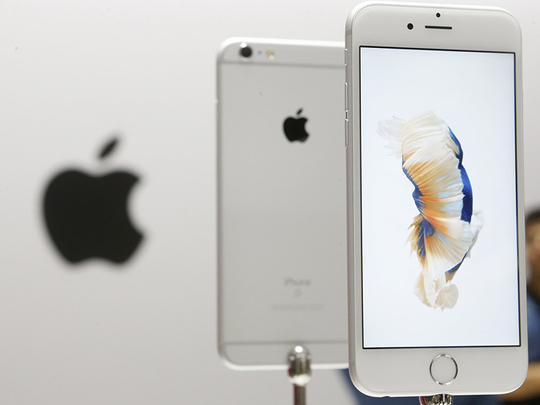
If there is one question being asked following Apple’s launch of the iPhone 6s in the UAE on Saturday, it is: should I upgrade?
That a hard question to answer, considering the average user’s tolerance for upgrades ranges from low (any reason is a good reason to upgrade) to very high (only for major hardware improvements), but there are number of significant news features and hardware upgrades to make an upgrade a serious consideration, even for someone who already has the iPhone 6. If you have an iPhone 5 or earlier model, you will diffidently want to consider upgrading.
For anyone looking for a full review of Apple’s latest flagship phone, we’ll be breaking down the device in Friday’s Gulf News tech section. But for anyone looking to upgrade today, here is the out-of-the-box review. (Literally, I have had it for less than three hours as I write this.)
THE 3-D iOS
Considering the way movies throw around ‘3-D’ these days, you might be thinking that the iPhone is going to come with a 3-D screen. It isn’t. This is a three-dimensionsal operating system, which means that your finger motions will no longer just be side-to-side and top-to-bottom, but will now include up-and-down. This new dimension means you will be also to press down on the screen to get various levels of new interactions.
This is the feature that Apple has been promoting the most and for good reason. Revolutionary is a bit strong, but it would not be surprising to see this as a standard feature in all smartphones a year from now.
My interaction with the new feature so far has been limited to using email, but so far it lived up to the hype. Faced with the usual full screen of emails, you can simply press down on the email and get a preview, which actually means being able to see most of the text and any attached image. Don’t need that email?
Then simply let go, and it takes you back to the home page. If you want to see more, simply press down harder, and the full email will open.
In simple terms, this function is going to cut down a lot on press the “back” button to see individual emails and pictures. The 3-D functionality is also being integrated into a number of apps, with Instagram and Twitter being the biggest names so far to add the feature. We’ll be testing those out over the next few days.
Improved camera
Apple’s camera has been a selling point for some time now. It’s a good camera at 12 megapixels, but selfies are still where it’s at for the Millennial crowd. The problem for selfies has always been that there is no flash. Actually, I’m not sure that has even been a problem for most people, but Apple seemed to have made it one, and then fixed the problem. The new camera, now at 5 megapixels, has software that actually turns the screen into a flash unit, meaning no more grainy, low-light selfies. So far, so good. The flash isn’t blinding, the pictures doesn’t look over-exposed even when held close to the face, and there is no sign of any red-eye. We’ll be testing this out more of course.
Hardware
The new iPhones look just like the last iPhones, but there are a few physical differences. While these new phones are heavier (143 grams for the new ‘S’ series vs 129 grams for the last iPhones) you probably won’t have noticed. I didn’t.
The added weight comes from two areas — an improved processor and new aluminium body. I’ve never complained about improved processor speeds, so I won’t start now, but I could not notice a difference in speed just using some basic apps. I’ll test out a few games this week and see how the phones do.
Also, I’m not sure the new aluminium body was necessary, but the considering the flack Apple received for returning to an aluminium body with the iPhone 6, I’m not surprised. It seemed like every tech review after the original 6 launch tried to bend the phone. I’m not usually a fan of Apple’s experiment with aluminium — my original iPad serves as a stark reminded of how it can lose it shape quickly — but my iPhone 6 never got bent out of shape. However, given the extra pressure people will be putting on the phone now to the 3-D OS, I’m sure it doesn’t hurt.
Things we haven’t had time to look at yet.
4K video and Apple’s Live Photos.
The 4K video in the demos I saw looked amazing, not doubt helped out by the software’s new video image-stabilisation software and a professional photographer. We’ll be giving that a shakedown in the next week, but more interesting is the Live Photos. These are basically Apple’s attempt at producing 3-second clips of video that can be used as photos, similar to GIFs.
Apple tells us that Live Photos actually records 1.5 seconds before you press the shutter and 1.5 seconds after. Sounds like time travel. We’re promised it’s not. We’ll let you know.











